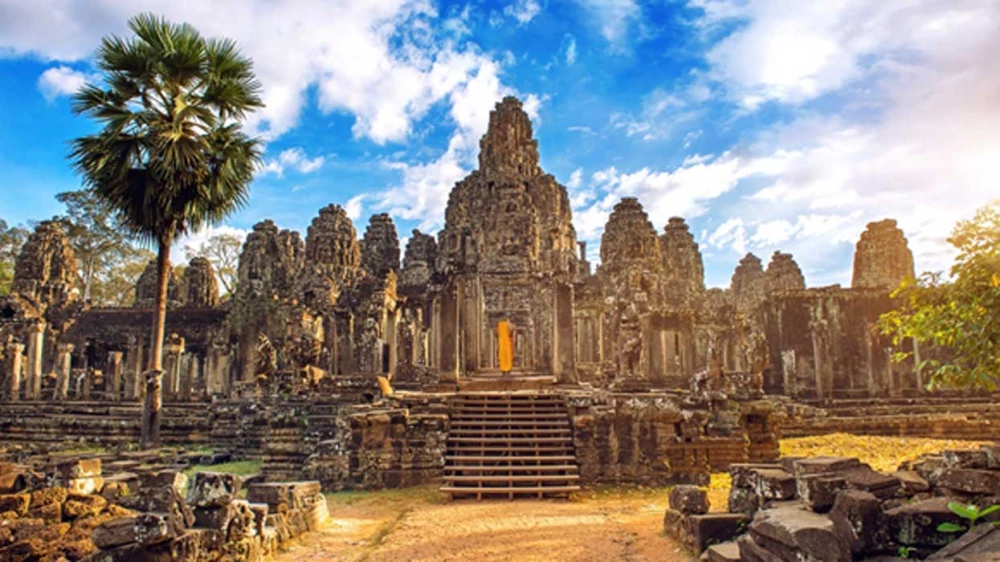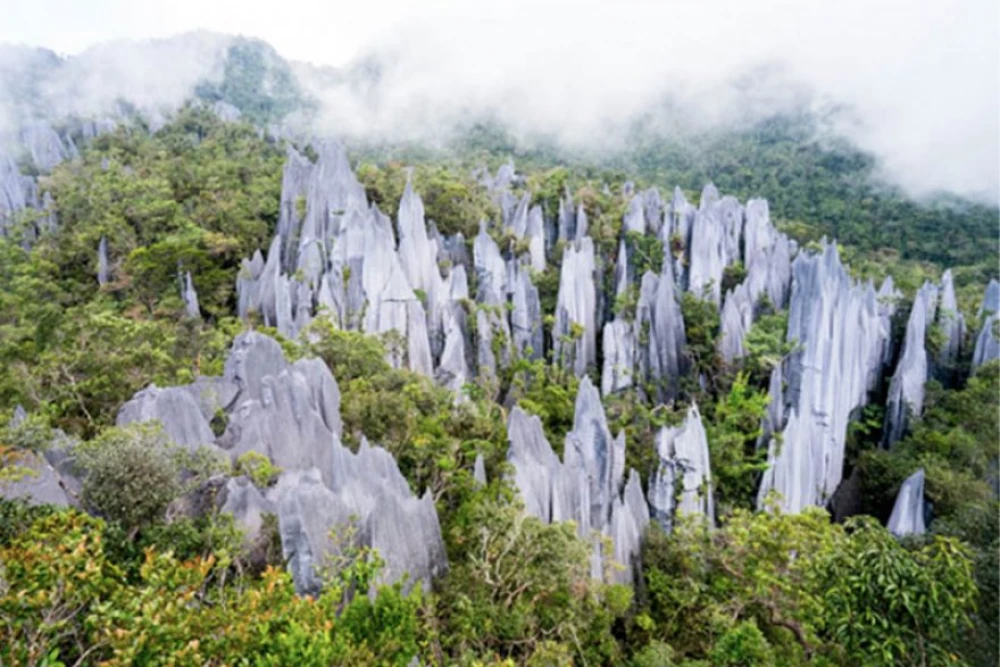
Thailand
Region map
General information
General Information
Thailand, known as the “Land of Smiles”, is a colorful country with a vast array of adventure offerings in trekking, biking, kayaking and rafting. The country possesses stunning natural beauty, from its northern mist-shrouded mountains to the astonishing karst limestone formations of Phang Nga Bay in its south. Thailand offers up a fascinating Buddhism-inspired culture, Khmer-influenced architectural treasures and a warm, hospitable populace famous for taking care of its guests.
Adventure choices abound in Thailand. Trek in Chiang Rai, fly with the gibbons in Chiang Mai, kayak the Pai River in Mae Hong Son, visit the “Bridge Over River Kwai” in Kanchanaburi or chill on the gorgeous beaches of Phuket- Adventure Asia has it all. Let's discover Thailand with Adventure Asia!
Thailand itineraries
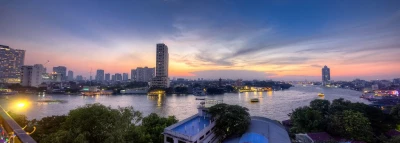
Ayutthaya Bike Adventure
This cycling adventure takes you past towering chedis amidst crumbling ruins that comprise the ancient city of Ayutthaya. Just north of Bangkok, Burmese invaders sacked the former capital of Siam in 1767, resulting in its demise. Today it still exudes many qualities that allude to its former dominance, splendor and history. This tour visits the impressive ruins of Ayutthaya; the grandiose summer palace of Siamese kings and takes you off the beaten path and onto trails meandering through the rural countryside.
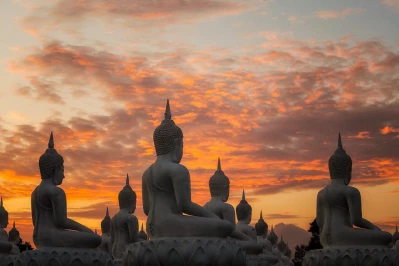
A Day of Ayutthaya Cultural Tour
This full-day Ayutthaya cultural tour offers an opportunity to learn about Siam history and explore ruins that to this day astound and amaze visitors. Your Adventure Asia guide will create an itinerary that best suits your wishes and conduct a tour designed to enlighten. You may choose to add cycling to your day if you wish.
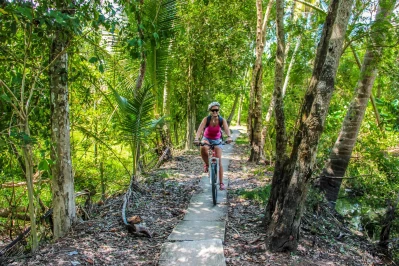
Cycling the Surroundings of Kanchanaburi
Kanchanaburi has a rugged, beautiful landscape of mountains, waterfalls, caves, and tranquil riverside settings. The region is a true treat for nature-lovers as well as for cycling aficionados. In this cycling tour, you will ride off-the-beaten-track trails through Kanchanaburi’s beautiful scenery, while taking in sights like the Bridge Over the River Kwai and the Hellfire Pass. The cycling trails will take you through stunning countryside, past small local villages, teak plantations, and even jungle tracks. The scenery is awe-inspiring with limestone cliffs punctuating a mountainous skyline that rolls toward Burma in the west. The journey will end at the Hellfire Pass, a historical spot famous for those who lost their lives building the Death Railway during World War II. The adventure also includes a ride on this historic railway before returning to Kanchanaburi.
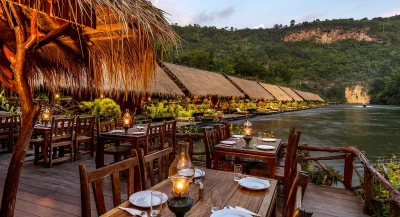
Exploration along River Kwai and Trek to Erawan Falls
Discover the war history in Kanchanaburi, Thailand before diving into the seven-level Erawan Falls. The Thailand-Burma Railways Centre is informative and interactive. Nearby, the Allied War Cemetery contains over 6,000 fallen prisoners of war. Of course, accommodation at the River Kwai Jungle Rafts with its unique floating rooms, are among the many highlights of your stay in this exceptional paradise.
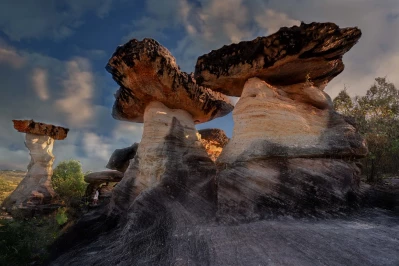
Explore Northeast Thailand in 4 days
Explore Thailand’s first national park with the country’s second largest Namtok Haew Narok Waterfall. Visit Phra Buddha Badh with its shrine of the holy footprint of Lord Buddha and large number of temple bells surrounding temple compound in Saraburi. Continue to Khao Yai National Park. En route, visit Wat Theppithak with its huge seated Buddha located on hillside and fruit market at Klang Dong. Go to Prasat Wat Sa Kamphaeng Yai, the biggest and most perfect Khmer Ruins in the province. It comprises three stupas on the same base lining in North-South direction and facing east. Continue to visit Prasat Wat Sa Kamphaeng Noi, which comprises laterite stupa and chapel with a big pond at front, all are in the embrace of laterite wall. Drive to Ubon Ratchathani and continue drive to Ban Pa Ao, the oldest villages in Ubon Ratchathani.
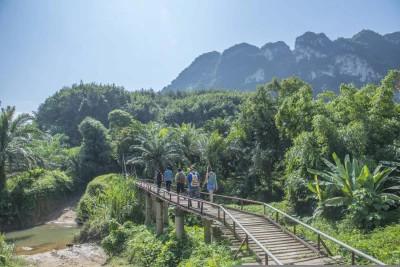
Explore the South of Thailand
Exploring the South of Thailand is a must-see for any foreign visitor of the country. As head down from Bangkok, you will witness the local life of the Thai markets as well as local monasteries with Buddha statues and relics. An excursion to Pletchburi will let you discover not only the great compound of the Royal Palace, built on top of a verdant hill but also the playful monkeys hanging in the trees. As you will go more south to Phuket, you will have the chance to embark on a canoe trip and hike in the Khaosok National Park. Your guide will always be there for you if you have any questions.

Experiencing Lifestyle and Culture Around Thailand
Visiting Thailand in one week might seem an adventure, but having the chance to embark on this trip will be an unforgettable experience. You will discover the ancient ruins of Ayuthaya, the temples in Lopburi, and the archaeological park in Sukhothai (the first capital of Siam). You will then head further to smaller towns such as Lampang and then reach the second largest city in Thailand, the bustling Chiang Mai. Before coming back to Bangkok, you will make a worthy detour to the border with Myanmar and head to the Golden Triangle as well as the fascinating city of Chiang Rai. En route, you will stop in locals’ workshops, learn how making pottery, and witness the lifestyle of local hill-tribes. You will return home, having a more in-depth understanding of Thailand and its culture.
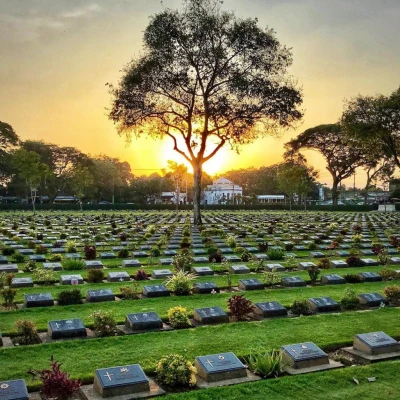
Cruising Upstream the historic River Kwai
The Death Railway is one of the most historical places in Thailand dedicated to World War II. Cruising the Kwai Noi River is one of the best ways to discover the historic sites spread along this trip and have a better understanding of the Kanchanaburi region. Along this trip, you will have the possibility to visit the cave-monasteries with great Buddha images as well as museums and cemeteries dedicated to the Allied prisoners of war. You will combine World War II’s history with visiting cultural sights and admiring beautiful views of the country. At the end of your trip, you will return with lots of information about the way this railway was built and how the life in the prisoner camps was like.
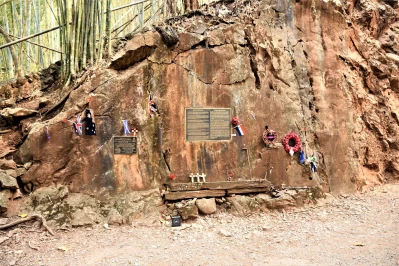
Cruising Downstream The Historic River Kwai
The Death Railway is one of the most historical places in Thailand dedicated to World War II. Cruising the Kwai Noi River is one of the best ways to discover the historic sites spread along this trip and have a better understanding of the Kanchanaburi region. Along this trip, you will have the possibility to visit the cave-monasteries with great Buddha images as well as museums and cemeteries dedicated to the Allied prisoners of war. At the end of your trip, you will return with lots of information about the way this railway was built and how the life in the prisoner camps was like.
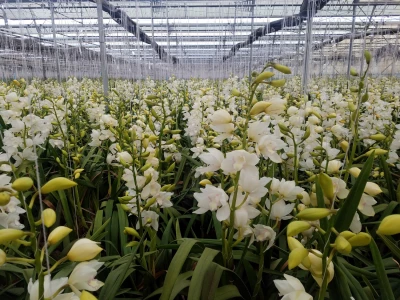
Discover the Trails of Thailand
This 9-day tour covers the central and northern parts of Thailand, featuring some of the most representative and interesting historic places in the country. You will discover the ancient ruins of Ayuthaya, the temples in Lopburi, and the archaeological park in Sukhothai (the first capital of Siam). You will then head further to smaller towns of the north, such as Lampang, Phayao, and Chiang Saen. A worthy detour will take you to the border with Myanmar and Laos, where you will explore the Golden Triangle as well as the fascinating city of Chiang Rai. En route, you will stop in locals’ workshops, learn how making pottery, and witness the lifestyle of local hill-tribes such as Akha and Lisu. Ultimately, you will then reach the second largest city in Thailand, the bustling Chiang Mai interspersed with Buddhist temples, great restaurants, and local markets. You will return home, having a more in-depth understanding of Thailand and its culture, the religious traditions, and the local lifestyle.

Ayutthaya Bike Adventure
This cycling adventure takes you past towering chedis amidst crumbling ruins that comprise the ancient city of Ayutthaya. Just north of Bangkok, Burmese invaders sacked the former capital of Siam in 1767, resulting in its demise. Today it still exudes many qualities that allude to its former dominance, splendor and history. This tour visits the impressive ruins of Ayutthaya; the grandiose summer palace of Siamese kings and takes you off the beaten path and onto trails meandering through the rural countryside.

A Day of Ayutthaya Cultural Tour
This full-day Ayutthaya cultural tour offers an opportunity to learn about Siam history and explore ruins that to this day astound and amaze visitors. Your Adventure Asia guide will create an itinerary that best suits your wishes and conduct a tour designed to enlighten. You may choose to add cycling to your day if you wish.

Cycling the Surroundings of Kanchanaburi
Kanchanaburi has a rugged, beautiful landscape of mountains, waterfalls, caves, and tranquil riverside settings. The region is a true treat for nature-lovers as well as for cycling aficionados. In this cycling tour, you will ride off-the-beaten-track trails through Kanchanaburi’s beautiful scenery, while taking in sights like the Bridge Over the River Kwai and the Hellfire Pass. The cycling trails will take you through stunning countryside, past small local villages, teak plantations, and even jungle tracks. The scenery is awe-inspiring with limestone cliffs punctuating a mountainous skyline that rolls toward Burma in the west. The journey will end at the Hellfire Pass, a historical spot famous for those who lost their lives building the Death Railway during World War II. The adventure also includes a ride on this historic railway before returning to Kanchanaburi.

Exploration along River Kwai and Trek to Erawan Falls
Discover the war history in Kanchanaburi, Thailand before diving into the seven-level Erawan Falls. The Thailand-Burma Railways Centre is informative and interactive. Nearby, the Allied War Cemetery contains over 6,000 fallen prisoners of war. Of course, accommodation at the River Kwai Jungle Rafts with its unique floating rooms, are among the many highlights of your stay in this exceptional paradise.

Explore Northeast Thailand in 4 days
Explore Thailand’s first national park with the country’s second largest Namtok Haew Narok Waterfall. Visit Phra Buddha Badh with its shrine of the holy footprint of Lord Buddha and large number of temple bells surrounding temple compound in Saraburi. Continue to Khao Yai National Park. En route, visit Wat Theppithak with its huge seated Buddha located on hillside and fruit market at Klang Dong. Go to Prasat Wat Sa Kamphaeng Yai, the biggest and most perfect Khmer Ruins in the province. It comprises three stupas on the same base lining in North-South direction and facing east. Continue to visit Prasat Wat Sa Kamphaeng Noi, which comprises laterite stupa and chapel with a big pond at front, all are in the embrace of laterite wall. Drive to Ubon Ratchathani and continue drive to Ban Pa Ao, the oldest villages in Ubon Ratchathani.

Explore the South of Thailand
Exploring the South of Thailand is a must-see for any foreign visitor of the country. As head down from Bangkok, you will witness the local life of the Thai markets as well as local monasteries with Buddha statues and relics. An excursion to Pletchburi will let you discover not only the great compound of the Royal Palace, built on top of a verdant hill but also the playful monkeys hanging in the trees. As you will go more south to Phuket, you will have the chance to embark on a canoe trip and hike in the Khaosok National Park. Your guide will always be there for you if you have any questions.

Experiencing Lifestyle and Culture Around Thailand
Visiting Thailand in one week might seem an adventure, but having the chance to embark on this trip will be an unforgettable experience. You will discover the ancient ruins of Ayuthaya, the temples in Lopburi, and the archaeological park in Sukhothai (the first capital of Siam). You will then head further to smaller towns such as Lampang and then reach the second largest city in Thailand, the bustling Chiang Mai. Before coming back to Bangkok, you will make a worthy detour to the border with Myanmar and head to the Golden Triangle as well as the fascinating city of Chiang Rai. En route, you will stop in locals’ workshops, learn how making pottery, and witness the lifestyle of local hill-tribes. You will return home, having a more in-depth understanding of Thailand and its culture.

Cruising Upstream the historic River Kwai
The Death Railway is one of the most historical places in Thailand dedicated to World War II. Cruising the Kwai Noi River is one of the best ways to discover the historic sites spread along this trip and have a better understanding of the Kanchanaburi region. Along this trip, you will have the possibility to visit the cave-monasteries with great Buddha images as well as museums and cemeteries dedicated to the Allied prisoners of war. You will combine World War II’s history with visiting cultural sights and admiring beautiful views of the country. At the end of your trip, you will return with lots of information about the way this railway was built and how the life in the prisoner camps was like.

Cruising Downstream The Historic River Kwai
The Death Railway is one of the most historical places in Thailand dedicated to World War II. Cruising the Kwai Noi River is one of the best ways to discover the historic sites spread along this trip and have a better understanding of the Kanchanaburi region. Along this trip, you will have the possibility to visit the cave-monasteries with great Buddha images as well as museums and cemeteries dedicated to the Allied prisoners of war. At the end of your trip, you will return with lots of information about the way this railway was built and how the life in the prisoner camps was like.

Discover the Trails of Thailand
This 9-day tour covers the central and northern parts of Thailand, featuring some of the most representative and interesting historic places in the country. You will discover the ancient ruins of Ayuthaya, the temples in Lopburi, and the archaeological park in Sukhothai (the first capital of Siam). You will then head further to smaller towns of the north, such as Lampang, Phayao, and Chiang Saen. A worthy detour will take you to the border with Myanmar and Laos, where you will explore the Golden Triangle as well as the fascinating city of Chiang Rai. En route, you will stop in locals’ workshops, learn how making pottery, and witness the lifestyle of local hill-tribes such as Akha and Lisu. Ultimately, you will then reach the second largest city in Thailand, the bustling Chiang Mai interspersed with Buddhist temples, great restaurants, and local markets. You will return home, having a more in-depth understanding of Thailand and its culture, the religious traditions, and the local lifestyle.

iuDia hotel Ayutthaya
uDia is a tasteful, comfortable and well equipped serviced accommodation located among the ancient ruins of the great Siamese kingdom of Ayudhya. Ayudhya served as the Siamese royal capital from 1350–1767. The city was sacked by the Burmese in 1767 and put to the torch.
During its heyday Ayudhya was one of greatest and richest cities in Asia, envied not only by the Burmese but by the Europeans as well. Under King Ramesuan Ayudhya conquered the great Khmer kingdom of Angkor Wat and brought back precious Khmer artefacts, treasures and artisans to Siam.

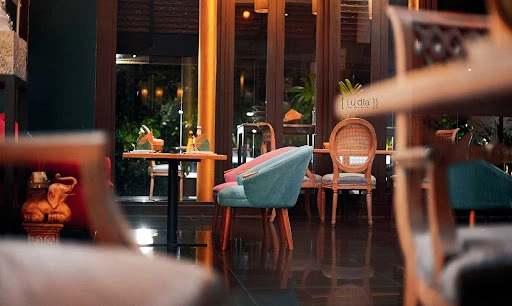


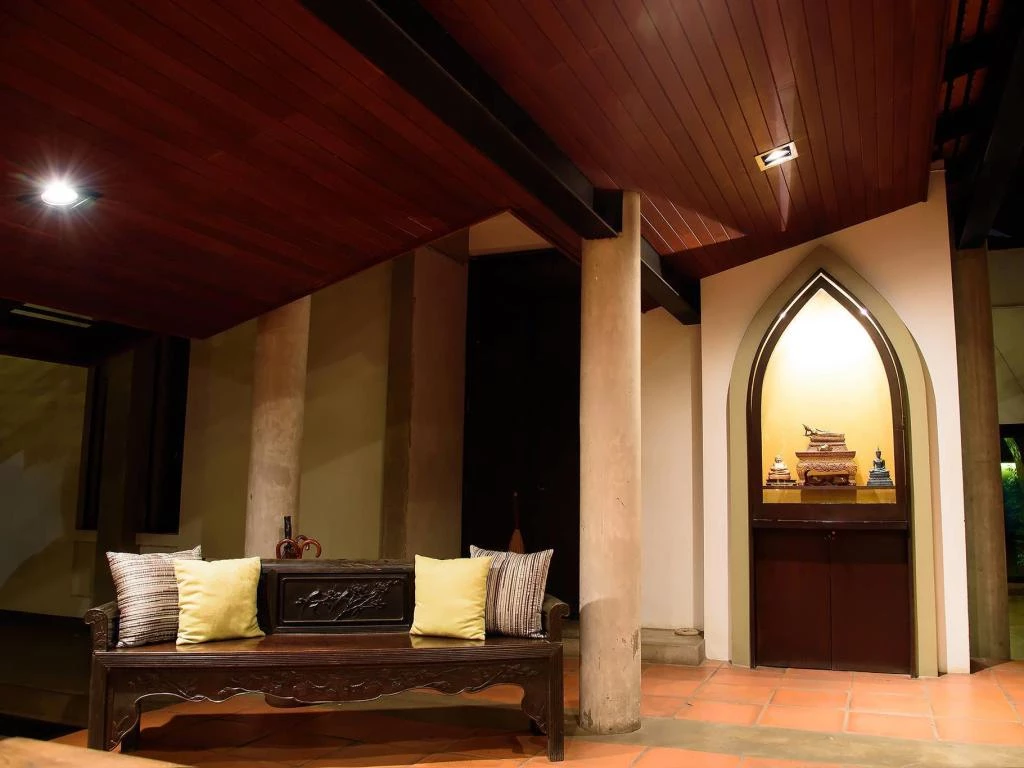
iuDia hotel Ayutthaya
uDia is a tasteful, comfortable and well equipped serviced accommodation located among the ancient ruins of the great Siamese kingdom of Ayudhya. Ayudhya served as the Siamese royal capital from 1350–1767. The city was sacked by the Burmese in 1767 and put to the torch.
During its heyday Ayudhya was one of greatest and richest cities in Asia, envied not only by the Burmese but by the Europeans as well. Under King Ramesuan Ayudhya conquered the great Khmer kingdom of Angkor Wat and brought back precious Khmer artefacts, treasures and artisans to Siam.

Baan Pomphet - Ayuthaya
Perched on a riverbank in temple-studded Ayutthaya, Baan Pomphet offers a fresh interpretation of the ancient capital’s crumbling stupas and fortresses.
Overlooking the water hyacinth-covered confluence of the Chao Phraya and Pa Sak rivers in Ayutthaya, a 90-minute drive from Bangkok, eight-room boutique hotel Baan Pomphet is the latest addition to the city's already design-forward hotel landscape.
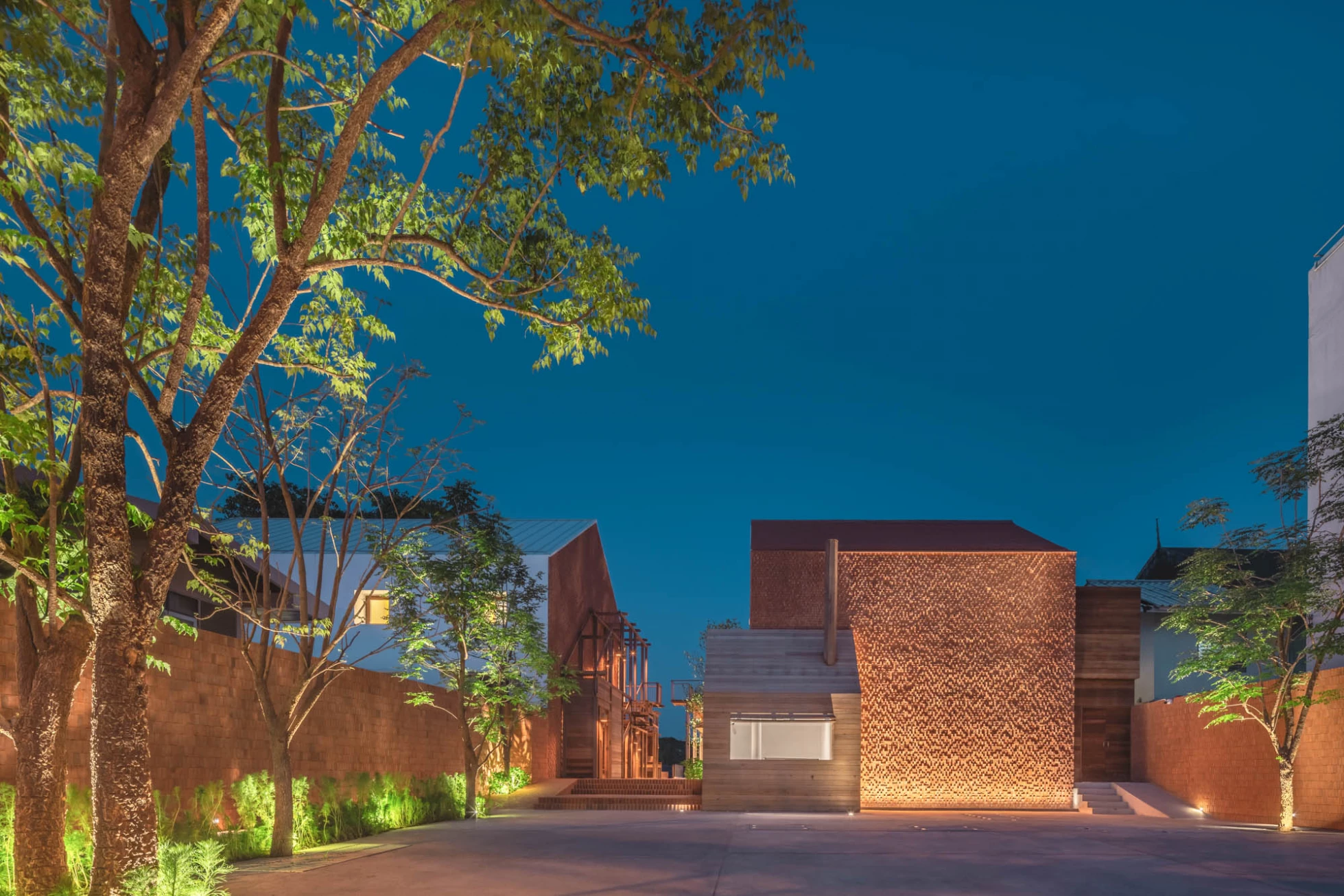
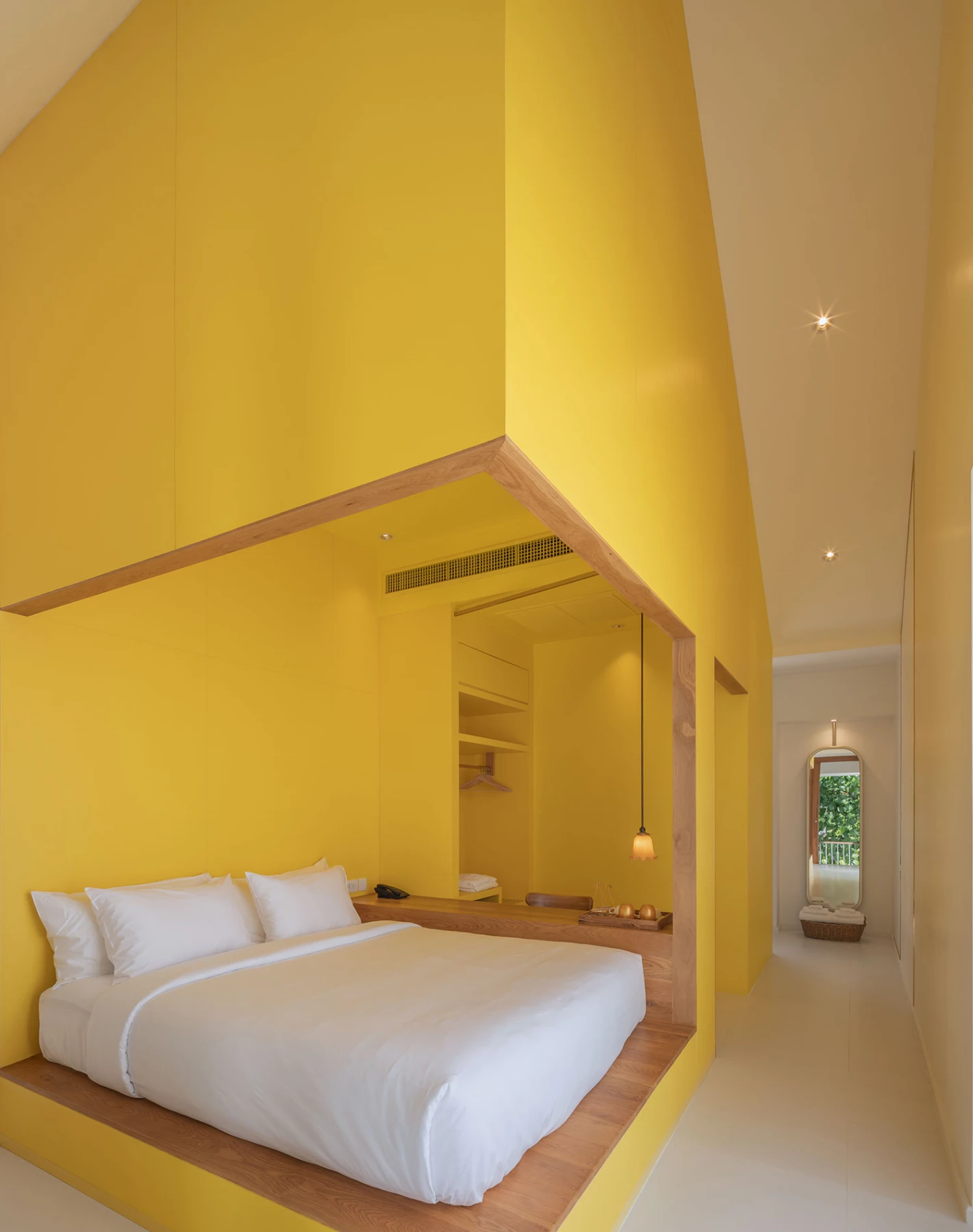

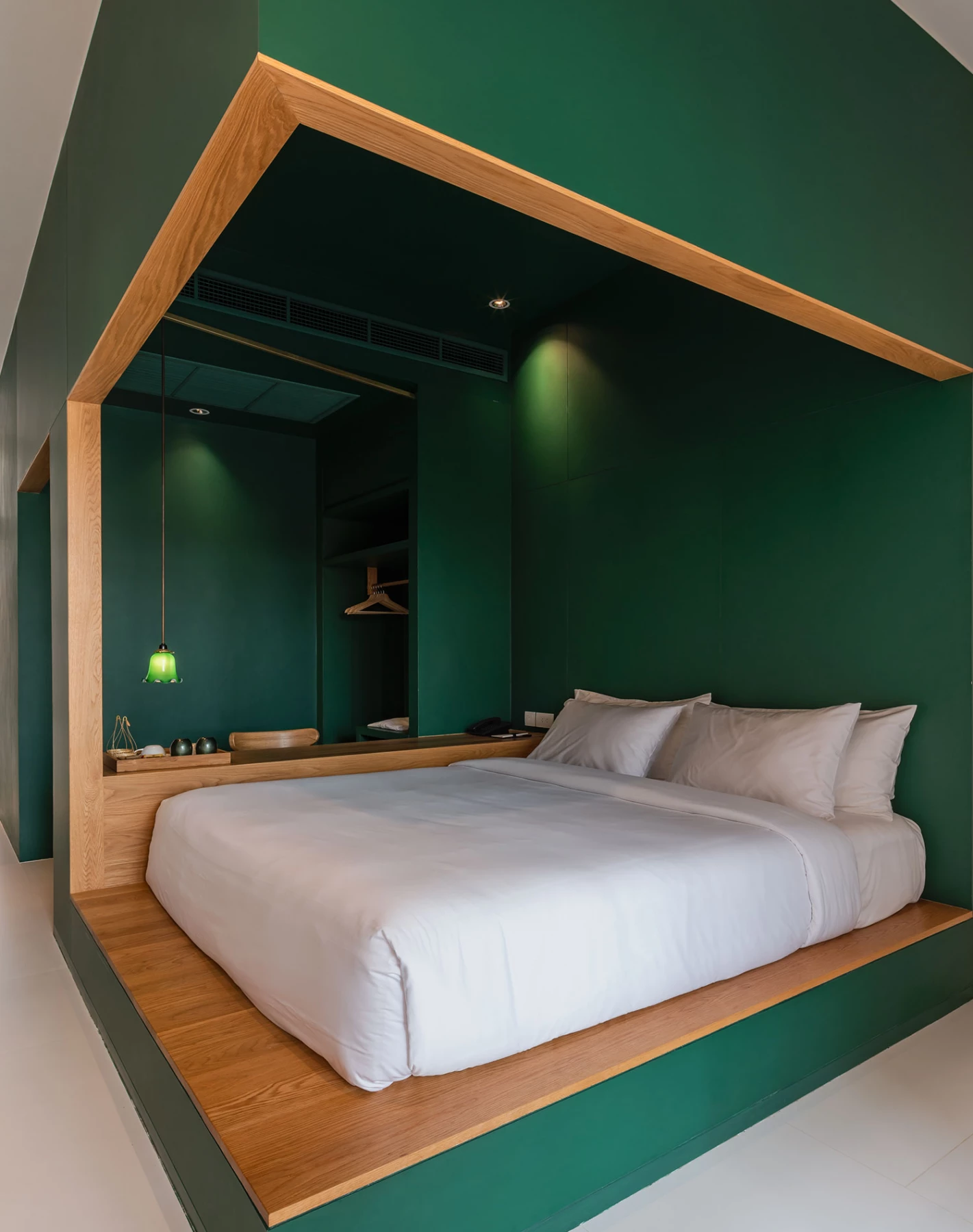
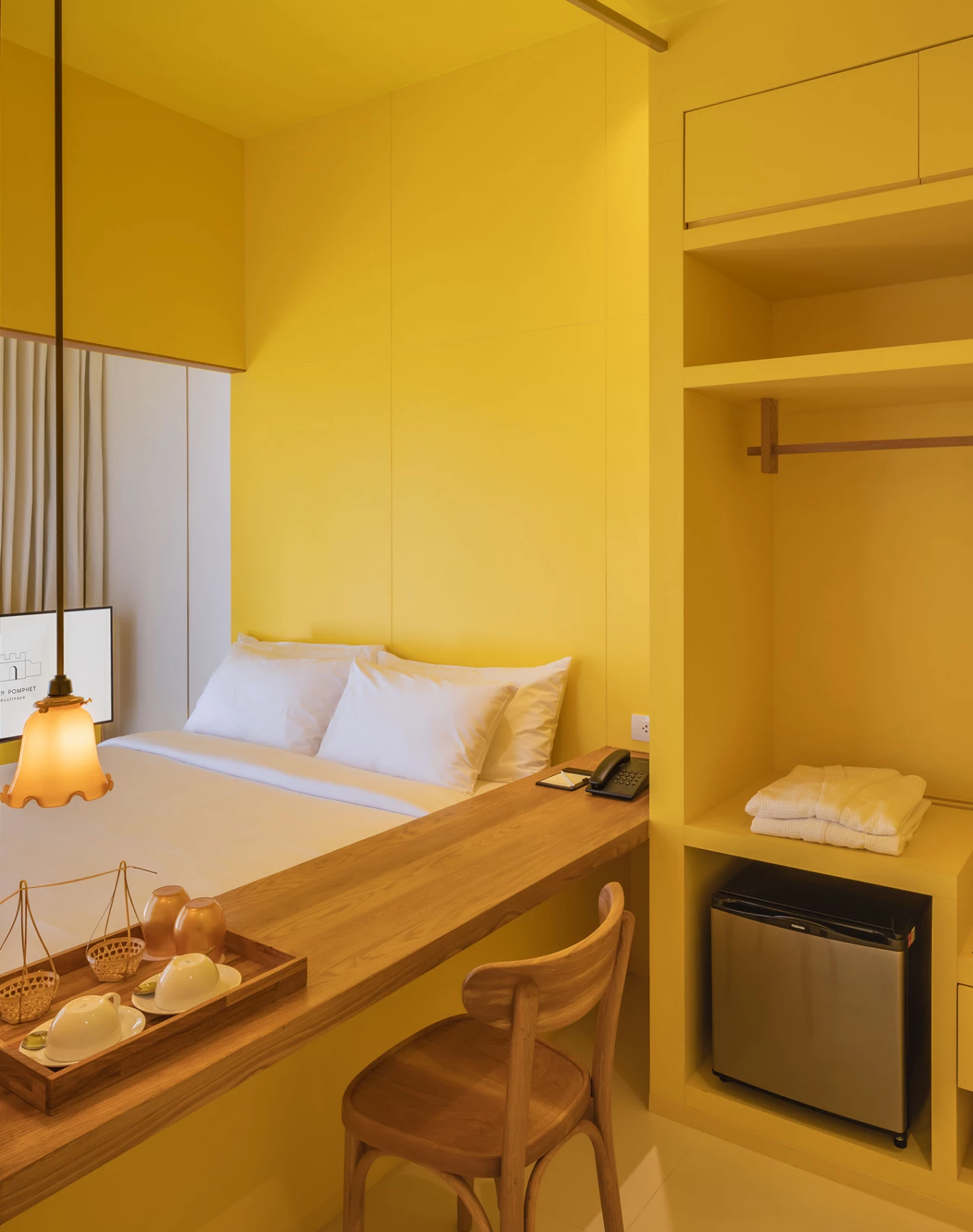


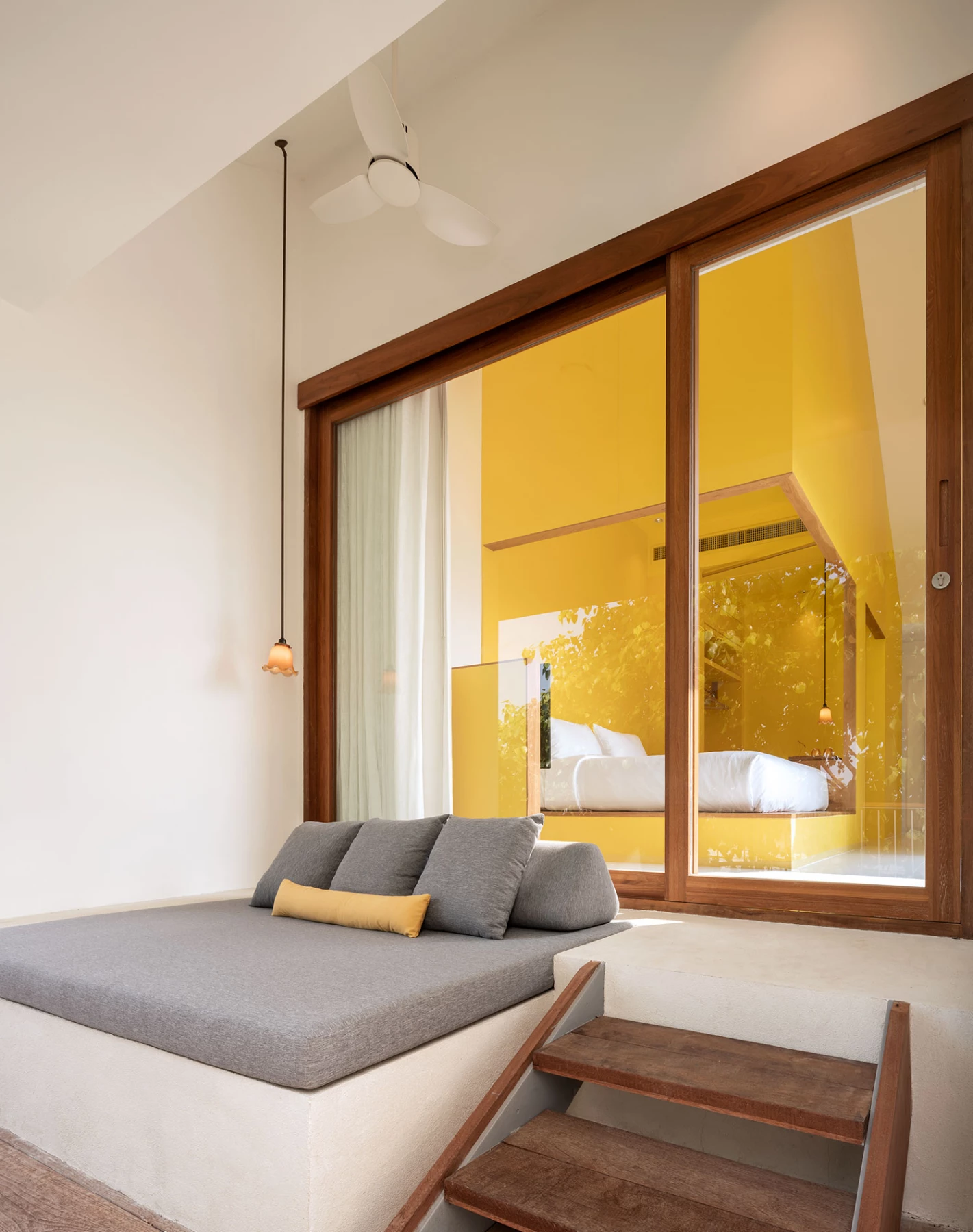


Baan Pomphet - Ayuthaya
Perched on a riverbank in temple-studded Ayutthaya, Baan Pomphet offers a fresh interpretation of the ancient capital’s crumbling stupas and fortresses.
Overlooking the water hyacinth-covered confluence of the Chao Phraya and Pa Sak rivers in Ayutthaya, a 90-minute drive from Bangkok, eight-room boutique hotel Baan Pomphet is the latest addition to the city's already design-forward hotel landscape.

Sala Ayutthaya
The sala ayutthaya is located in the heart of Ayutthaya, Thailand, along the banks of the Chao Phraya River, opposite the famous Wat Phutthaisawan (Phutthaisawan temple). The luxury boutique hotel is surrounded by different temples in Ayutthaya, along with archeological and historical sites dating back to the original Ayutthaya Kingdom. Enjoy your Ayutthaya tour experience at sala’s boutique hotel for an unforgettable romantic getaway.
Sala Ayutthaya
The sala ayutthaya is located in the heart of Ayutthaya, Thailand, along the banks of the Chao Phraya River, opposite the famous Wat Phutthaisawan (Phutthaisawan temple). The luxury boutique hotel is surrounded by different temples in Ayutthaya, along with archeological and historical sites dating back to the original Ayutthaya Kingdom. Enjoy your Ayutthaya tour experience at sala’s boutique hotel for an unforgettable romantic getaway.
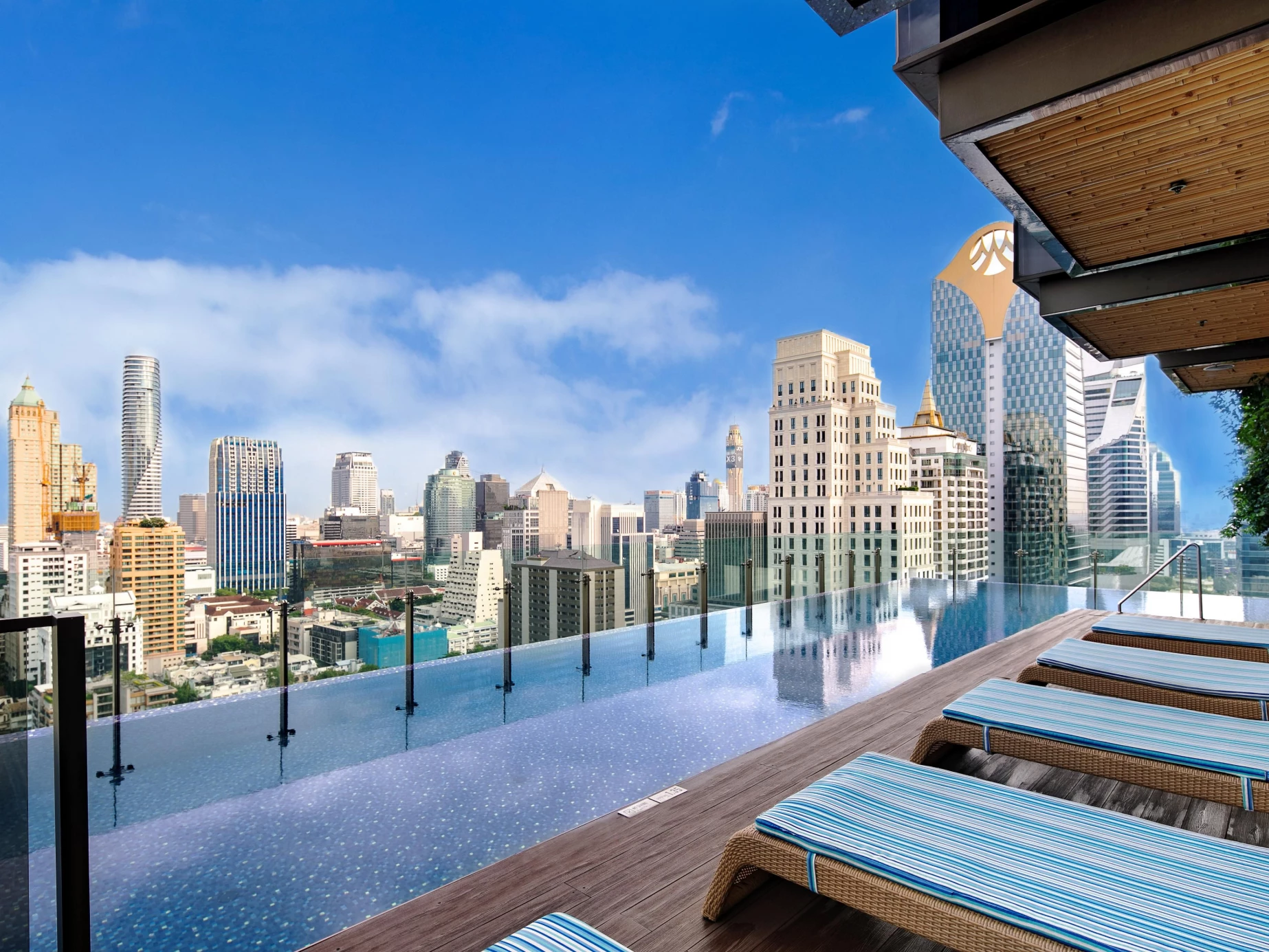
Hotel Indigo Bangkok Wireless Road
At Hotel Indigo® Bangkok Wireless Road, our stylish rooms offer amazing downtown Bangkok cityscapes while combining vintage details and modern materials to share our neighbourhood’s contrasting story of technology and tradition. Every floor and every room pay homage to our community with design touches and artworks inspired by the everyday uniqueness of Thailand.
Hotel Indigo Bangkok Wireless Road
At Hotel Indigo® Bangkok Wireless Road, our stylish rooms offer amazing downtown Bangkok cityscapes while combining vintage details and modern materials to share our neighbourhood’s contrasting story of technology and tradition. Every floor and every room pay homage to our community with design touches and artworks inspired by the everyday uniqueness of Thailand.
Thailand goes well with
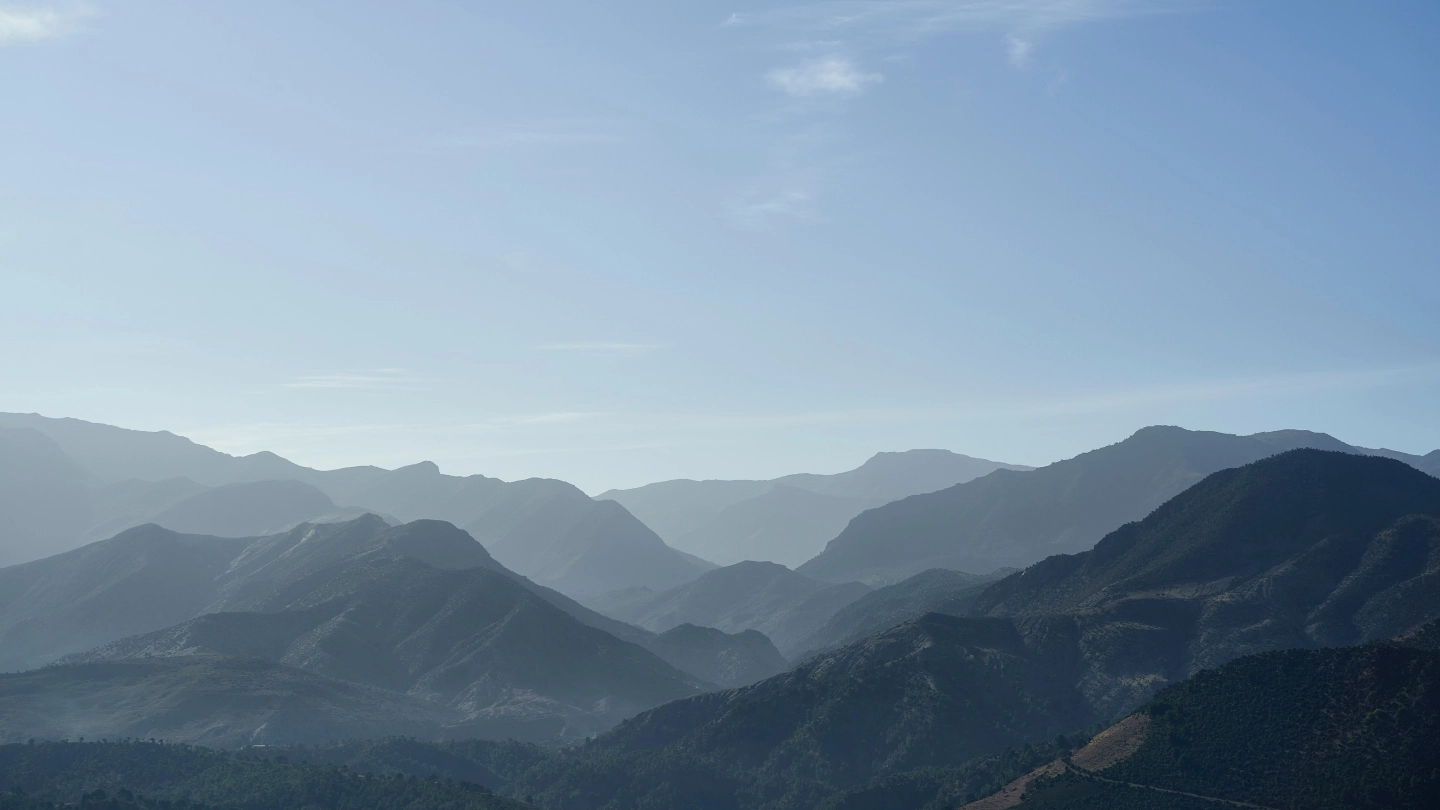
Why Adventure Asia
The company aims to serve soft/medium vacation options to the experienced adventure customer seeking uniquely styled expeditions, rather than traditional tourist-oriented itineraries that are prevalent.
Event Festival
Browse a month-by-month breakdown of suggested itineraries, seasonal activities, climate considerations and festivals.
New Year’s Day: despite being a largely Western celebration and not officially the Thai New Year, festivities are still held throughout Thailand with parties, fireworks and food and drink. The areas which see the most tourism usually hold the biggest parties.
Weather and Climate

Thailand experiences three distinct seasons: hot, rainy, and cool. The hot season runs from March to May and can be unpleasantly hot, especially in the north and central parts of the country where there are no sea breezes to cool temperatures down. Things can get uncomfortable, especially if you plan to get active, and humidity levels are high.
The rainy season generally begins in May and sees sunny days interspersed with heavy monsoons. The rains cool things down for a brief period, which makes the heat more bearable. Rains are particularly heavy in the northern and central parts of the country. The cool season is much more pronounced in the north, where night-time temperature can get as low as 12°C in the cities as low as 8°C in the mountains. Daytime temperatures are pleasant as they hover at about 25°C throughout the country.
The peak season in Thailand runs from November through March when many people from Europe and the US arrive to escape the harsh winters in their own countries. Due to the temperate climate, this is also the best time to visit if you want to avoid the rain and don”t like extreme heat. During the peak season, prices rise and hotels can become fully booked so it is advisable to book well in advance.
Trekking can be done year round, even during the hot months we can suggest treks that stay above 1000m where the climate is cooler and the trails shaded, however the usually lush vegetation can be dry in the North between February and May. Even in the rainy season the rains are not persistent and trekking is still pleasant although mud and humidity can be annoying. The cool season gets very cold when sleepy rough in the mountains, and popular spots tend to be busier as Thais also like to enjoy their country at this time. All things considered, November is the prime month weather-wise for visiting.
Travel FAQs
Essential Information
Widely referred to as the “Land of Smiles”, Thailand is personified as a welcoming and hospitable place. Indeed the friendly demeanour of its people offers a comforting reassurance that the country is largely a safe and relaxed destination. Thailand is steeped in natural beauty, exoticism, history and culture, making it a memorable package for most its visitors. The main tourist hubs on the south coast and in central and northern Thailand are easy to get around and you”ll find that many locals you come into contact with will speak English. Medical facilities, particularly in the major cities, are excellent and tourist police are on hand to offer help and advice. A well-established tourist infrastructure, burgeoning expat community and modern facilities all help place visitors at ease. But there is some important cultural etiquette worth noting if you wish to avoid frustrations or misunderstandings. It pays to be patient and calm, since Thais hate losing face or dealing with hotheaded people. If you leave the beaten track, you will find some of Thailand’s most beautiful scenery and friendliest people, but it is important to remember that English is not widely spoken outside the main cities and hospitals in rural areas have limited facilities. There are few health concerns for tourists when visiting the kingdom. Malaria is not a threat in most tourist areas, and while the tap water is not potable, it is clean enough to wash and brush teeth with. It is advisable to ensure you are up to date with all standard vaccinations such as tetanus and hepatitis A before leaving home. Other vaccines to consider, but not essential, are rabies and hepatitis B. HIV/AIDS is prevalent in the country due to an entrenched sex industry. Should you have any minor health concerns while on holiday, the country’s pharmacies offer trained pharmacists who can offer advice in English. Although medical treatment in Thailand is generally of an international standard and not expensive, travel insurance is highly recommended due to increased negligence risk, such as motoring or adventure activities. While most people’s visits to Thailand are problem free, it is important to remember some basic safety precautions. Always take care of your belongings and never flash cash around in public. While most Thai people will go out of their way to help you, pickpockets and the like are present in cities and on public transport. Typically, it is the heavily tourist-ed areas that attract dodgy characters, but on the whole it is merely persistent taxi drivers and salesman who are annoying. A favorite trick is to take you off on a shopping trip under the guise of a free taxi ride, while others still fall for the perennial gem sale scam. Adventure Asia programes ensure you are kept well away from these. The deep south of Thailand is plagued by militant extremists and as such there have been bombings, shootings and fighting. Fortunately the conflict is largely contained in this single area, with the rest of the country unaffected. Tourists are rarely involved in the trouble although traveling in this area is best avoided as an extra precaution. Adventure Asia does not have any tours in this region. Occasionally this passive Buddhist country does flare up with political differences, particularly in the wake of the 2006 Coup and Thaksin Shinawatra era. The 2008 seige of the airport caused inconvenience to travelers but left the rest of the country untouched. These incidents of protest can generate terrible negative publicity in the press but are mostly kept away from tourist areas and rarely compromise the safety of Thailand’s guests. During such situations Adventure Asia keeps its travelers fully and prudently informed of the risks or developments, and there is generally no need to abruptly cancel plans. Travelling by air, road or rail is safe in Thailand with the latter two providing a great way to see the country. Flight connections are numerous and generally convenient, while our transfers by road uphold the highest safety precautions to counter any reckless motorists. Trekking, climbing, bike riding and other physical pursuits are popular in Thailand, largely due to the varied terrain. However, it is important that you have a good level of fitness. Any physical activity you are used to back home may be harder in Thailand due to the heat.
Getting There
The easiest way to reach Thailand is to fly into Suvarnabhumi International Airport. This is the country”s main gateway and it receives flights from all over the world. Other international airports include Phuket airport, which mainly services charter flights from European and Asian destinations, and Chiang Mai international, which serves limited destinations such as Mandalay (Myanmar), Kunming (China) and Kuala Lumpur (Malaysia). The main airlines offering flights to Thailand include: Thai Airways International, British Airways, Qantas, Singapore Airlines, Emirates, Gulf Air, EVA Air, Lufthansa, Alitalia, Air France and Air China, although there are many others from all over the world. Overland entry points are also found most practically at Pedang Besar (Malaysia), Nong Khai (Laos), Aranya Prathet (Cambodia), Tak and Mae Sai (Myanmar), with little fuss. Apart from the Penang to Krabi/Phuket minibus transfer, or visiting Vientiane from Isaan, travel through these points is not comfortable nor recommended. Numerous local flights offer much more convenience.
Getting Around
If you have arrived by air at Suvarnabhumi International Airport, it is possible to take a domestic flight to virtually any airport in Thailand within 90 minutes flying time of Bangkok. Along with Phuket and Chiang Mai, the other major domestic airports include Chiang Rai, Udon Thani, Hat Yai and Koh Samui. Domestic flights offer good value for money and are offered by a number of airlines including: Thai Airways (for business class), AirAsia, Nok Air, Bangkok Airways and Orient Thai. The recent move of international flights to Suvarnabhumi International Airport has meant that the old airport in Bangkok, Don Muang, is somewhat redundant. It only services a limited number of domestic flights to destinations across Thailand and is approximately two hours away (especially in rush hour) from Suvarnabhumi airport. However, for local flights out of Bangkok this can offer a less busy alternative and is a similar distance from downtown Bangkok. Sleeper trains and so-called VIP buses offer overland transport, with limited comfort but a chance to witness the landscape. Sometimes local minibus transfers are necessary to reach some smaller destinations. Thailand has an excellent network of roads, most of which are in good condition. It is possible to hire a car while in the country, providing you have a valid driver”s licence, and make sure you get insurance. Be careful of local drivers who have a tendency to ignore road safety rules $ especially where motorbikes are concerned. Most signs, especially on major roads, are in Thai and English so you will have no problem understanding the directions. Air conditioned, metered, taxis are the best means of getting around locally, although a trip in the ubiquitous and famous Thailand tuk tuk (three-wheeler) is a quintessential experience here. Limosine transfers are always available without fuss or worry at airports. There are numerous other forms if you”re desperate, such as local minibuses (songteaws).
Visa and Permits
Tourism is very important to Thailand”s economy and because of this the country welcomes tourists from a numerous countries with a free 30 day visa on arrival. This includes all EU countries, the US, Canada, Australia, New Zealand and all ASEAN countries, along with many others. Visas on arrival are available at all land crossings and international airports. Those wishing to remain longer, or who are not permitted visas on arrival, can apply for an instantly- issued 60 day tourist visa (approx fee: $15) at any Thai consulate or embassy (or via post). Passports need to be valid for at least six months at the time of entry. It”s also possible to exit the country and return the same day for a fresh 30 day visa. Your Adventure Asia contact can advise you if a visa is necessary. By law you should carry your passport with you at all times, although this is never enforced. A foreign driver’s licence is valid, but a certified translation is advisable if it is not written in romanised script. Carry photocopies of your passport and some spare 3x5cm photos is also advisable.
Local Customs
Thailand is predominately a Buddhist country and the culture and customs are largely dictated by Buddhist laws. Respect and hierarchy play an important part in Thai culture and as such, personal questions are often asked in order for Thais to establish where they stand. Do not take this as being impolite as no malice is intended. It is simply a way for the Thais to work out how they should best communicate with you. Age is often one of the first questions asked as older people are shown a great deal of respect. An older person is referred to as “pi” while a younger person is known as “nong”. The concept of “face” is of great important in Thailand; you should, under no circumstances, embarrass a Thai in public and cause them to !lose face”. Never raise your voice, regardless of how stressful a situation becomes. Decorum is important to Thais, and though they are used to foreigner’s faux paux, you should try to note some of their important etiquette considerations. One of the most memorable impressions of Thai culture is their graceful wai, where hands are brought together in a prayer-like gesture at the chest, and heads are bowed slightly. You”ll encounter it often in the Kingdom as a sign of welcoming and respect to visitors. As a guest and foreigner you needn’t wai back unless its an important and respected person, such as an elder. Generally, the “junior” among you initiates the exchange of wais, however, adults do not wai children or service staff. Never touch a Thai person’s head as this is regarded as the most sacred place on the body and avoid pointing your feet at anyone. Always remove your shoes when entering a Thai person’s house or temple. Avoid talking negatively about the royal family, who are highly revered throughout Thailand, so as not to cause any offence. In certain places, such as cinemas, t is also necessary to stand and be silent when the national anthem is played. When entering temples, you need to ensure that shoulders and knees are covered and remember that beachwear is only appropriate on the beach. Men should never remove their tops, unless they are by a pool or on the beach, and women should dress conservatively when out and about, particularly in rural areas.
Events and Festivals
January New Year’s Day: despite being a largely Western celebration and not officially the Thai New Year, festivities are still held throughout Thailand with parties, fireworks and food and drink. The areas which see the most tourism usually hold the biggest parties. February Chiang Mai Flower Festival: this local festival is a colourful one with a number of tropical displays showcased along the southwest side of the moat. There are also parades, competitions and lots of food stalls serving up northern Thai delights. Chinese New Year: celebrated countrywide, this famous festival sees the local Chinese community host colourful street parades and dragon dancing as well as the throwing of firecrackers and gift exchanges between family members. March Bangkok International Jewellery Fair: this annual event attracts keen shoppers from all across the world, who gather at a number of the city”s top hotels to buy and sell unique jewellery designs. April Thai New Year (Songkran): the official Thai New Year sees the country participate in a three- day long water fight. Government offices and businesses shut down for the duration as the country takes to the streets to throw water over each other and tourists. It is all done with good nature and sees tourists and locals alike playing side by side. The biggest celebrations can be seen in Chiang Mai. It can be difficult to avoid, if you”d rather avoid it then stay indoors. May Coronation Day: is a popular festival in Thailand as the monarchy is so revered. There are many tributes held for HRH King Rama IX, although the biggest is at the Sunam Luang ground outside the Grand Palace. Visakha Puja Day: is a Buddhist holiday to celebrate the birth of the Lord Buddha. Thais can be seen making their way to local temples, where they make merit, and there are also many marches clockwise around chedis throughout the country. Alcohol is forbidden to be served on this religious day. June Yasothon Rocket Festival: held in Isaan, this festival sees hundreds of homemade rockets being launched into the skies to signal the coming of the rains. It is an impressive sight to see, although be careful for stray rockets. July Khao Phan Sa: is a low-key event which sees monks throughout the country retreat into their temples for Buddhist Lent. It is a time for meditation and reflection and lasts throughout July, August and September; which is also when the heaviest rain is experienced. It is common for young men to enter the monkhood as novices during this time and many local Thais make their way to temples to make merit with supplies for the monks while they are in their retreat. August Queen’s Birthday: the birthday of Queen Sirikit is also Mother’s Day in Thailand. Mothers throughout the country are given gifts and shown thanks by their family. September Elephant Polo: this tournament is a popular event. It sees a mix of Thais and Westerners battling it out to become the champions. Held in Chiang Saen, northern Thailand, it is worth going to see if you are in the area. October Phuket Vegetarian Festival: this nine-day event dates back many years and is connected with ancient Chinese tradition. There is plenty of food on offer as well as a number of activities throughout the centre of the town. November Loi Krathong: a major celebration throughout Thailand and one of the most beautiful of the year, this festival of light sees sins of the past year being washed away by floating kratong (small decorated boats). The kratong are placed in the water with a candle and sent downstream. Another beautiful aspect of the festival is the paper lanterns which are sent into the sky together with people”s hopes and wishes. December King’s Birthday: as with the queen’s birthday, the king’s birthday also doubles up as Father’s Day. The king himself and fathers across the country are paid respect by family members.
What will it cost for a…?
A market fruit shake = 25 THB Bottle of local beer = 100 THB Market stall meal = 40 – 100 THB Sit-down dinner at a nice restaurant = 350 – 1000 THB
Are credit cards accepted widely in Thailand?
Credit cards are usually accepted by hotels, large retailers and tourist sites but are less commonly accepted by smaller vendors and family-run restaurants in rural areas. Market stalls and street vendors will not accept credit card. Always carry enough cash for smaller purchases in case credit cards are not an option.
What is ATM access like in Thailand?
ATMs are widely available in larger cities but are less common in small villages or rural areas. Make sure you have enough cash before leaving urban areas.
Do I need to purchase travel insurance before traveling in Thailand?
Absolutely. All passengers travelling with Adventure Asia are required to purchase travel insurance before the start of their trip. Your travel insurance details will be recorded by your leader on the first day of the trip. Due to the varying nature, availability and cost of health care around the world, travel insurance is very much an essential and necessary part of every journey.
What's your refund policy ?
Below is our cancellation and refund policy: 🔸 60 days prior to arrival date: No cancellation charge for the land cost. We guarantee 100% of the land cost back. The airline cancellation fees are applied according to the airline's policy. 🔸 59 - 30 days prior to arrival date: 5% cancellation charge + airfare cancellation fees 🔸 29 - 15 days prior to arrival date: 10% + airfare cancellation fees. 🔸 14 - 8 days prior to arrival date: 40 + airfare cancellation fees. 🔸 7 days prior to arrival date: 100% 🔸 No show: 100% Please note that the domestic flight tickets in the package are non-refundable




